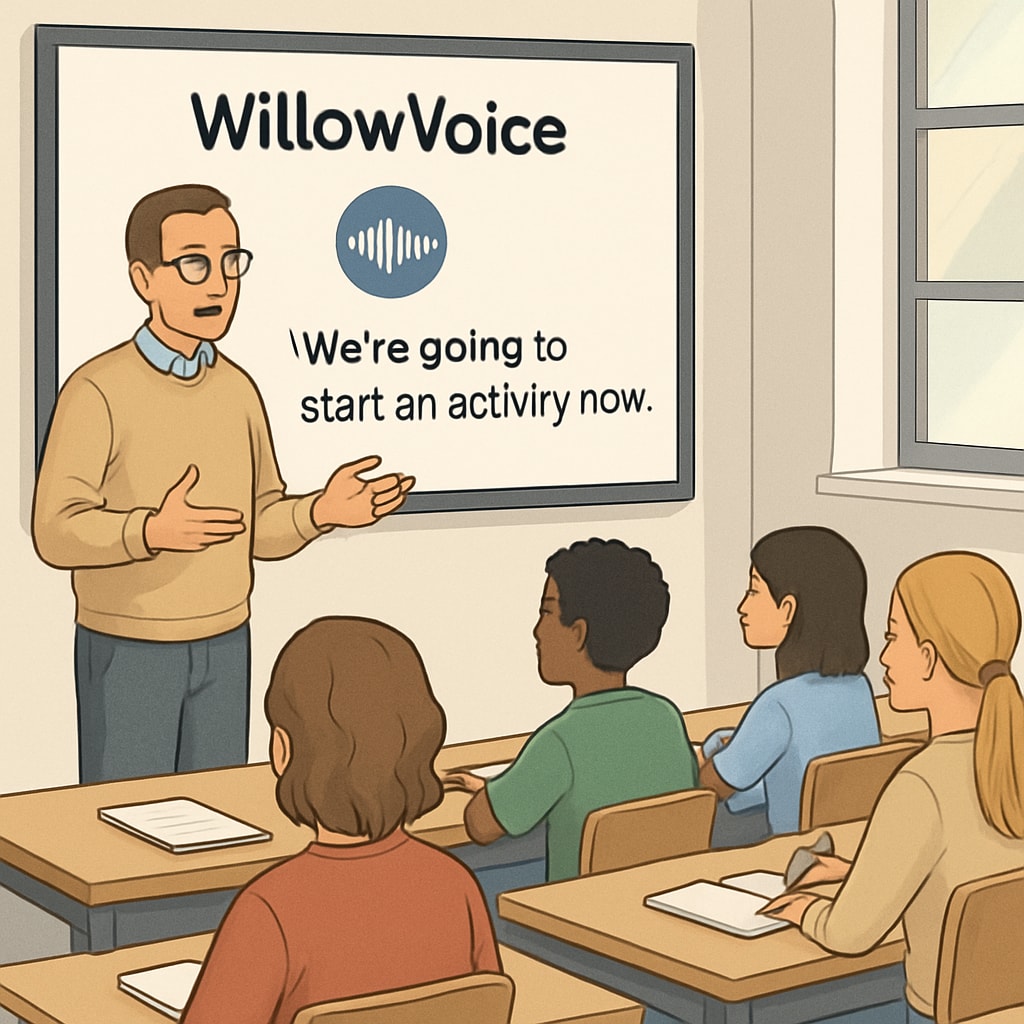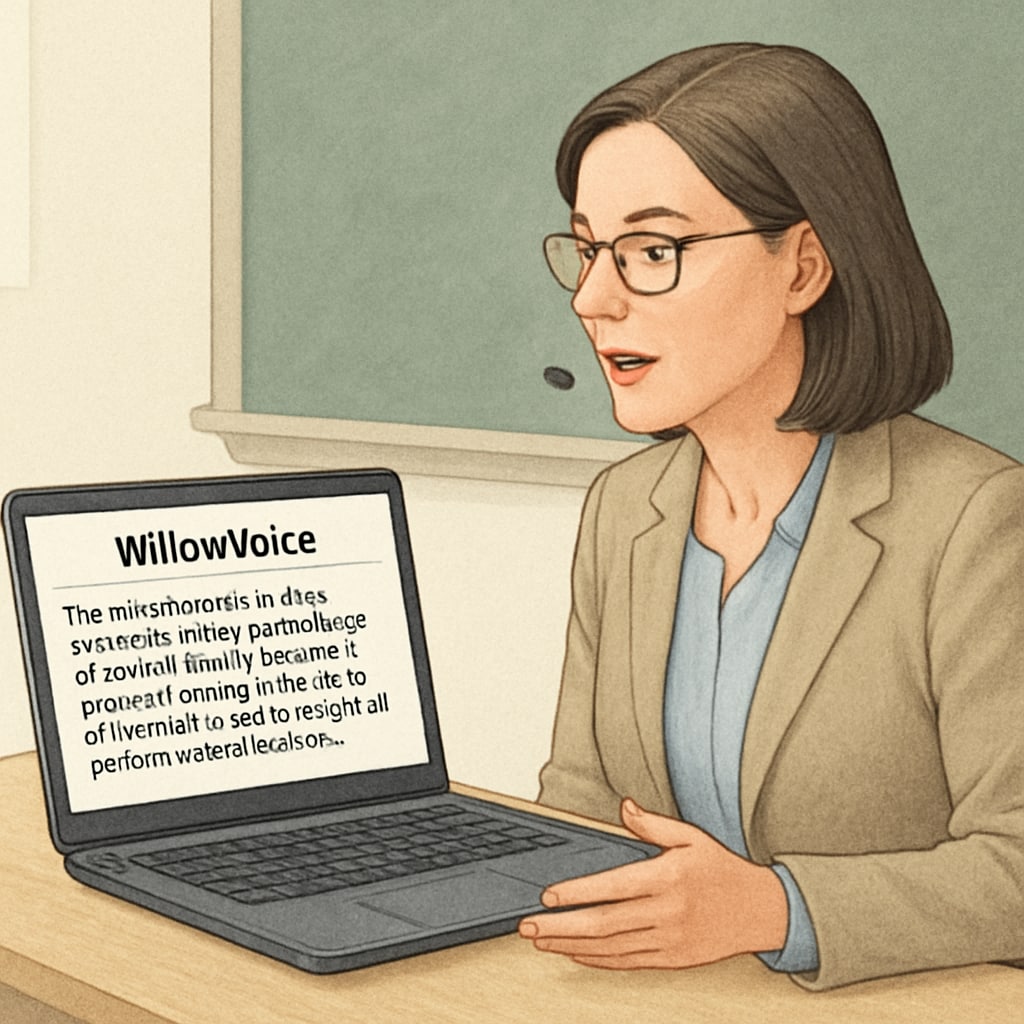For K12 educators, balancing lesson planning, administrative tasks, and meaningful student interactions has always been a challenge. Enter WillowVoice, a cutting-edge speech-to-text tool designed to enhance educational efficiency, streamline teaching feedback, and allow teachers to focus on what truly matters—engaging with their students. By leveraging the power of speech-to-text technology, WillowVoice is not only reducing the burden of documentation but also contributing to smarter, more effective teaching practices.

Cutting Down Administrative Workload with Speech-to-Text Tools
One of the biggest challenges faced by educators is the sheer volume of administrative work. From creating lesson plans to documenting student progress, these tasks often consume hours that could otherwise be spent on student engagement. WillowVoice addresses this issue by providing educators with an intuitive speech-to-text platform. Teachers can dictate notes, record lesson summaries, or even capture student observations in real-time, all without the need for manual typing.
For example, instead of spending an hour typing out detailed feedback for each student, teachers can use WillowVoice to record voice comments that are instantly converted into text. This efficiency not only saves time but also ensures that feedback is more personalized and immediate. According to a study on speech recognition technology, tools like these can reduce administrative time by up to 40%.

Enhancing Teaching Feedback and Communication
Providing constructive and timely feedback is crucial for student growth, yet it is also one of the most time-consuming aspects of teaching. WillowVoice enables educators to give effective feedback in a fraction of the time. Teachers can record spoken evaluations during or immediately after student presentations, and WillowVoice converts these into detailed written reports.
This streamlined feedback process ensures that students receive actionable insights faster, helping them to improve more effectively. Furthermore, the accuracy and clarity of WillowVoice’s transcription eliminate the risk of miscommunication, fostering better teacher-student relationships. As a result, this tool contributes to a more supportive learning environment.
In addition, educators can use the platform to send voice-transcribed messages to parents, ensuring clear and regular communication about student progress. This feature not only builds trust with parents but also strengthens the home-school connection.
Focusing on Meaningful Teaching Interactions
By reducing time spent on administrative work and feedback, educators can dedicate more time to direct student interaction. Research shows that increased teacher-student engagement leads to better learning outcomes. WillowVoice empowers teachers to focus on creating dynamic lesson plans, facilitating group discussions, and providing one-on-one support.
For instance, teachers can use the extra time to implement innovative teaching methods, such as project-based learning or hands-on activities. These approaches not only enhance student understanding but also foster critical thinking and collaboration skills.
Moreover, WillowVoice’s ability to integrate with classroom devices ensures seamless transitions between teaching and administrative tasks, allowing teachers to maintain their focus on students rather than toggling between different tools.
The Future of Speech-to-Text in Education
As technology continues to evolve, tools like WillowVoice are paving the way for a more efficient and impactful educational experience. Speech-to-text technology not only simplifies the daily workflow of educators but also enriches the learning process for students. By adopting such tools, schools can create a more balanced, engaging, and effective teaching environment.
In the future, we can expect further advancements in AI-driven teaching technologies, enabling even greater customization and interactivity in the classroom. For now, tools like WillowVoice offer a glimpse into the transformative potential of technology in education.
For more information on how speech-to-text tools are revolutionizing various industries, visit this detailed overview on Britannica.
Readability guidance: This article uses concise paragraphs and clear headings to ensure readability. Lists and examples are used to highlight key points, while overuse of passive voice and long sentences is avoided. Transition words such as “for instance,” “as a result,” and “in addition” are included to maintain flow.


